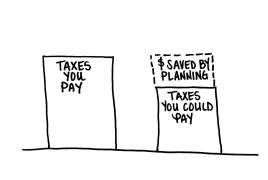If you travel outside of the United States and all of your time is spent doing business activities, then you can deduct the entire amount of travel expense. But say you fly to Madrid for a business meeting and you want to swing by and see Barcelona while you’re across the pond, is your travel still deductible?
Generally the rule states that for travel to be fully deductible, it has to be entirely for business purposes. But for every rule, there are exceptions. Here are four exceptions that can make your travel considered “entirely for business,” and thus making it fully deductible.
1. You don’t have substantial control over arranging the trip.
This means you’re an employee and either not related to your employer or not a managing executive. Self-employed individuals usually have substantial control over their own business trips and need to meet one of the other exceptions.
2. You’re out of the country for no more than one week.
Any trip that doesn’t exceed 7 days (including travel days) can be fully deductible. This means that if you leave on a Wednesday and get back anytime before the following Wednesday, then you may deduct the full amount of travel.
3. You spend less than a quarter of the time on personal activities.
This means that if you’re overseas doing business for 10 days and spend 3 extra days sightseeing, then less than 25% (3/13 = 23%) is personal.
4. You don’t take major consideration into the vacation aspect of the trip.
This has a little more grey area than the other three and may be harder to prove. However, even if you do have substantial control over the arranging the trip, if you can establish that a personal vacation was not a major consideration during the planning of the trip, your travel can still be fully deductible.
Travel expenses include airfare, taxi or shuttles, or any other transportation related expenses. Of course, if you buy an additional plane or bus ticket for personal vacation or sightseeing purposes during your trip, those would not be deductible as business expenses. The same goes for other expenses that would normally be deductible; they must apply to a business purpose rather than a personal expense.
For the entire write-up on travel expenses see IRS Publication 453.
By: Anthony Mifsud, CPA










